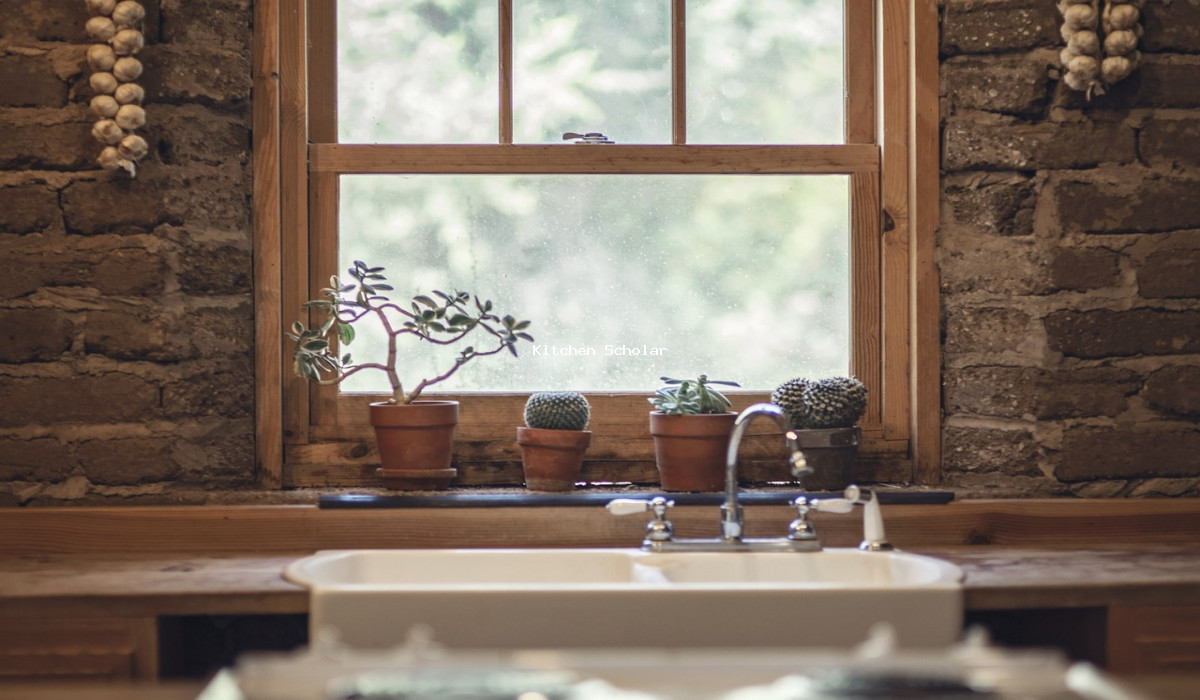10 Easy Steps to Create Your Own Kitchen Garden: A Beginner’s Guide. Learn the simple and rewarding process of starting your own kitchen garden in your backyard. With these easy steps, you can get started on growing your own fresh herbs, vegetables, and fruits right at home. So grab your tools and follow along as we guide you on creating your very own garden oasis in the comfort of your kitchen.
10 Easy Steps to Create Your Own Kitchen Garden
10 Easy Steps to Create Your Own Kitchen Garden: A Beginner’s Guide
10 Easy Steps to Create Your Own Kitchen Garden: A Beginner’s Guide. herbs vegetables and 10 Easy Steps to Create Your Own Kitchen Garden: A Beginner’s Guide
The Many Benefits of a Kitchen Garden
Growing your own fresh fruits, vegetables, and herbs is a rewarding and fulfilling experience. A kitchen garden not only adds beauty to your backyard, but it also provides you with a plentiful and healthy supply of organic produce. Starting a kitchen garden may seem daunting at first, but with the right techniques and tools, you can easily get started. In this informative guide, we will discuss everything you need to know to start your own kitchen garden.
Why You Should Start a Kitchen Garden
There are countless benefits to growing your own food in a kitchen garden. Not only will you save money on groceries, but you will also have access to fresh, nutrient-rich produce right in your backyard. By growing your own food, you also have control over how it is grown; you can ensure that no harmful chemicals or pesticides are used.

Additionally, gardening has been proven to reduce stress and improve mental health. It’s a fantastic form of exercise, and it allows you to connect with nature and disconnect from technology. Whether you are a seasoned gardener or a beginner, a kitchen garden has something to offer for everyone.
How to Start Your Own Kitchen Garden
Starting a kitchen garden requires some planning and preparation. Here are some key steps to follow to get your garden growing:
1. Choose the Right Location
The most important aspect of a successful kitchen garden is finding the perfect spot for it. Choose a location that receives plenty of sunlight, at least 6 hours a day. You should also make sure that the land is flat and has good drainage. If you have limited outdoor space, consider using containers or raised garden beds.
2. Get the Right Soil
Typical garden soil may not be sufficient for a kitchen garden. You want to ensure that your soil is rich in nutrients and well-draining. Consider adding compost or organic fertilizers to improve the quality of your soil. You can also conduct a soil test to determine the pH level and any nutrient deficiencies.
3. Decide What to Plant
Now comes the fun part – choosing what to plant in your kitchen garden! Consider what fruits, vegetables, and herbs you enjoy eating and also what grows well in your climate. Keep in mind that some plants require more space than others, so plan accordingly. It’s also a good idea to rotate your crops each year to prevent soil depletion.
4. Plant and Maintain
Once you have chosen what to plant, it’s time to get your hands dirty! Follow the instructions for planting each type of produce and make sure to give them the right conditions to thrive. In addition to watering and weeding, it’s essential to regularly check for pests and diseases and address them immediately.
Tips for a Successful Kitchen Garden
- – Consider companion planting; certain plants can benefit others in terms of pest control and nutrient regulation.
- – Don’t be afraid to try planting different varieties of the same plant to see which one grows better in your garden.
- – Keep a gardening journal to track what works and what doesn’t for future reference.
- – Use organic techniques to control pests and diseases, such as hand-picking bugs or introducing natural predators.
- – Add diversity to your garden by including flowers to attract pollinators and beneficial insects.
- – Utilize vertical space by growing climbers such as beans and peas.
Frequently Asked Questions
How much space do I need for a kitchen garden?
A small backyard or even a balcony can provide enough space for a thriving kitchen garden. Using containers or vertical gardening techniques can also maximize space.
What is the best time of year to start a kitchen garden?
The best time to start a kitchen garden is in the spring when the soil has thawed and the threat of frost has passed. 10 Easy Steps to Create Your Own Kitchen Garden, you can start certain plants indoors even earlier.
Is it necessary to use pesticides in a kitchen garden?
You can have a successful kitchen garden without using any pesticides. There are many natural methods to control pests, such as introducing beneficial insects and using organic sprays.
In Summary
A kitchen garden is a fantastic way to provide yourself and your family with fresh, organic produce while also promoting mental and physical well-being. With the right location, soil, and plants, you can enjoy a bountiful harvest and the satisfaction of growing your own food. Experiment with different techniques and plants, and don’t be afraid to make mistakes; gardening is a continuous learning process. Happy gardening!
10 Easy Steps to Create Your Own Kitchen Garden: A Beginner’s Guide
Learn the simple and rewarding process of starting your own kitchen garden in your backyard. With these easy steps, you can get started on growing your own fresh herbs, vegetables, and fruits right at home. So grab your tools and follow along as we guide you on creating your very own garden oasis in the comfort of your kitchen.. Title 10 Easy Steps to Create Your Own Kitchen Garden: A Beginner’s Guide
Kitchen Garden: How to Get Started
Are you tired of constantly buying expensive and often subpar produce from the grocery store? Are you looking for a way to incorporate more fresh10 Easy Steps to Create Your Own Kitchen Garden, organic vegetables into your diet? Look no further than starting your very own kitchen garden! Not only is it cost-effective and convenient, but it also allows you to control the quality and variety of your fruits and vegetables. In this blog post, we will provide a comprehensive guide on how to get started with your own kitchen garden.
The Benefits of a Kitchen Garden
Before we dive into the practicalities of starting your garden, it’s essential to understand the many benefits of having a kitchen garden. Not only does it provide access to fresh produce right at your fingertips, but it also encourages sustainable living by reducing the carbon footprint of food transportation. Furthermore, gardening has proven to be beneficial for mental and physical health, promoting relaxation and exercise. 10 Easy Steps to Create Your Own Kitchen Garden, growing your fruits and vegetables ensures that you know exactly what goes into your food, eliminating harmful pesticides and chemicals. With these benefits in mind, let’s explore how you can start your kitchen garden.

Choosing the Right Location
The first step in starting your garden is choosing the right location. Select an area in your yard that receives plenty of sunligh10 Easy Steps to Create Your Own Kitchen Gardent, at least six hours a day. If you live in a region with extreme temperatures, consider positioning your garden in a spot that offers some shade during the hottest parts of the day. 10 Easy Steps to Create Your Own Kitchen Garden, ensure that the area is well-drained to prevent waterlogging.
Tip:
Consider using raised beds or containers if you don’t have enough space in your yard, as they allow for more efficient use of limited space and can be placed on a patio or balcony10 Easy Steps to Create Your Own Kitchen Garden.
Selecting Your Plants
Now that you have chosen the perfect spot for your garden, it’s time to choose the fruits and vegetables you want to grow. Consider what you usually buy at the grocery store and start with those items. Some easy-to-grow options for beginner gardeners include tomatoes, lettuce, carrots, and herbs like basil and parsley. Consider the specific needs of each plant, such as soil, sunlight, and water requirements, before finalizing your selection.
Tip:
If you’re unsure of where to start, consider buying starter plants instead of seeds. This will help ensure a higher success rate as they are already established and ready to grow.
Preparing Your Soil
Good soil is essential for a successful kitchen garden. The ideal soil is nutrient-rich, well-draining, and has a neutral pH level. Before planting, till the soil and amend it with compost or organic matter to improve its nutrient content. If you’re using raised beds10 Easy Steps to Create Your Own Kitchen Garden, consider filling them with high-quality soil, specially formulated for vegetable gardens.
Tip:
Consider getting your soil tested to determine its pH level and nutrient content. This will help you make informed decisions about what amendments are required10 Easy Steps to Create Your Own Kitchen Garden.
Planting and Maintaining Your Garden
Now that you have your garden location, plants, and soil, it’s time to get your hands dirty! Follow the instructions on the seed packets or starter plant labels for the ideal planting depths and spacing. Keep in mind that most vegetables require plenty of water, so be sure to water your garden regularly, especially during hot summer months. Additionally, regular weeding and pest control are crucial to maintaining a healthy garden. Use organic methods such as handpicking pests and using companion plants to deter them.
Tip:
Consider starting a compost bin to get rid of any garden waste while benefiting your soil’s quality.
Harvesting Your Garden
Congratulations, you’re now a proud kitchen gardener! As your plants grow, you will have the satisfaction of watching them mature and produce delicious fruits and vegetables10 Easy Steps to Create Your Own Kitchen Garden. When it’s time to harvest, use sharp, clean garden shears to avoid damaging your plants. Stick to the recommended ripeness guidelines for each plant to ensure that you get the best flavor and texture from your harvest.
Tip:
Some plants, such as tomatoes and herbs10 Easy Steps to Create Your Own Kitchen Garden, require pruning to promote healthy growth and increase productivity. Research specific techniques for each plant to ensure proper pruning methods.
In Conclusion
Starting a kitchen garden is an incredibly rewarding experience, offering an array of benefits for both your wellbeing and your wallet. With these tips and guidelines, you can get started on your journey to growing fresh, delicious produce right at home. Remember to be patient and enjoy the process10 Easy Steps to Create Your Own Kitchen Garden, as gardening is a learning experience. Happy growing! 10 Easy Steps to Create Your Own Kitchen Garden: A Beginner’s Guide

10 Easy Steps to Create Your Own Kitchen Garden: A Beginner’s Guide
How do I start a kitchen garden?
Starting a kitchen garden is quite simple. The first step is to prepare a plot of land or find an appropriate container. 10 Easy Steps to Create Your Own Kitchen Garden, choose the types of plants you would like to grow and gather the necessary supplies such as soil and seeds. 10 Easy Steps to Create Your Own Kitchen Garden, follow proper planting and maintenance techniques to ensure a successful harvest.
What are the best plants for a kitchen garden?
The best plants for a kitchen garden depend on your personal preferences, but some popular choices include herbs like basil, thyme, and rosemary, as well as vegetables like tomatoes, peppers, and lettuce. It’s also a good idea to choose plants that are easy to grow and harvest.
How much space do I need for a kitchen garden?
The amount of space needed for a kitchen garden can vary depending on the types of plants you want to grow. For smaller plants like herbs, a small container or even a windowsill can suffice. 10 Easy Steps to Create Your Own Kitchen Garden, for larger plants like tomatoes or zucchini, you will need a larger plot of land or a bigger container.
What supplies do I need for a kitchen garden?
The basic supplies you will need for a kitchen garden include soil10 Easy Steps to Create Your Own Kitchen Garden, containers or raised beds, seeds or seedlings, and gardening tools such as a trowel and watering can. You may also want to invest in additional tools and materials like fertilizers, supports for plants, and pest control products.
How often should I water my kitchen garden?
The frequency of watering your kitchen garden depends on several factors such as the type of plants, weather conditions10 Easy Steps to Create Your Own Kitchen Garden, and the type of soil you have. Generally, plants in containers will require more frequent watering than those in the ground. It’s important to check the soil moisture regularly and water when it starts to feel dry.
Can I have a kitchen garden indoors?
Yes, you can have a kitchen garden indoors as long as you have a space with access to natural light. You can use containers or even hydroponic systems to grow plants indoors. Just make sure to provide adequate light, proper ventilation, and regular watering for your indoor garden to thrive.
How can I prevent pests in my kitchen garden?
Pests can be a common problem in kitchen gardens, but there are several ways to prevent them. You can use natural pest control methods like companion planting, physical barriers10 Easy Steps to Create Your Own Kitchen Garden, or organic sprays. It’s also important to keep your garden clean and free of weeds as they can attract pests.
What is the best time to plant a kitchen garden?
The best time to plant a kitchen garden depends on the types of plants you want to grow and your climate10 Easy Steps to Create Your Own Kitchen Garden. In general, most herbs and vegetables can be planted in early spring or late summer10 Easy Steps to Create Your Own Kitchen Garden. It’s important to research the specific planting times for each plant you want to grow in your kitchen garden.
Can I have a kitchen garden if I live in an apartment?
Yes, you can have a kitchen garden even if you live in an apartment. You can use containers, hanging baskets, or vertical gardening techniques to grow plants in small spaces. It’s also possible to create a community garden or join a local community-supported agriculture (CSA) program to have access to a larger garden space. 10 Easy Steps to Create Your Own Kitchen Garden: A Beginner’s Guide
